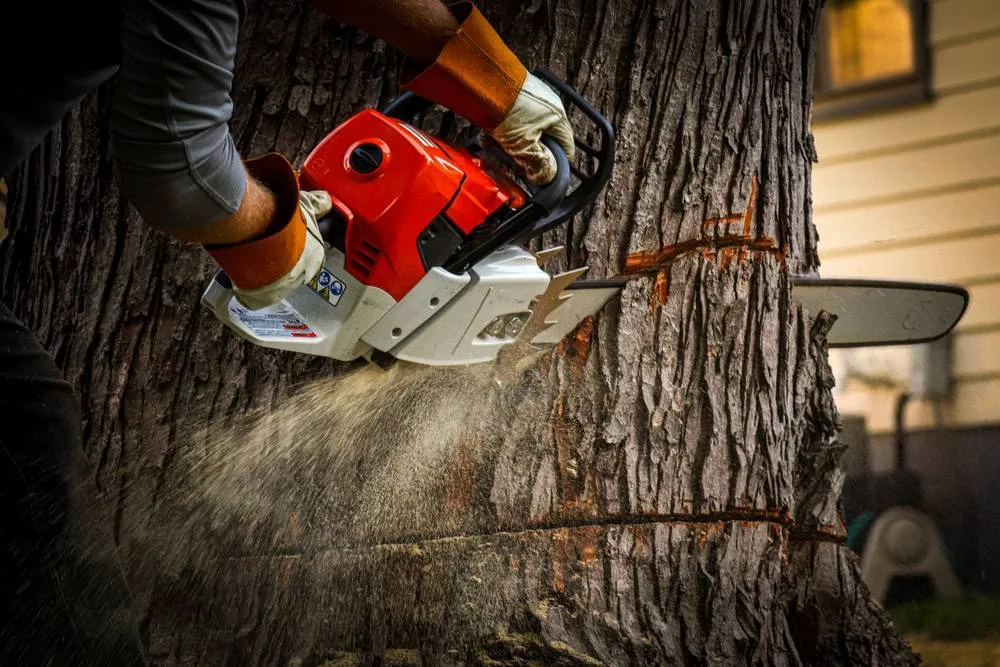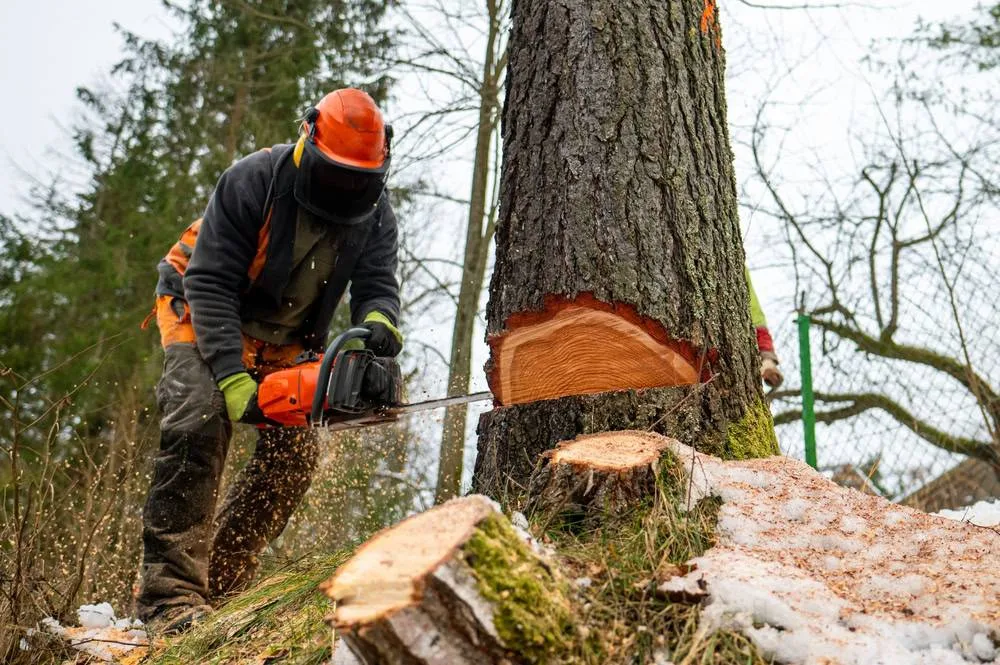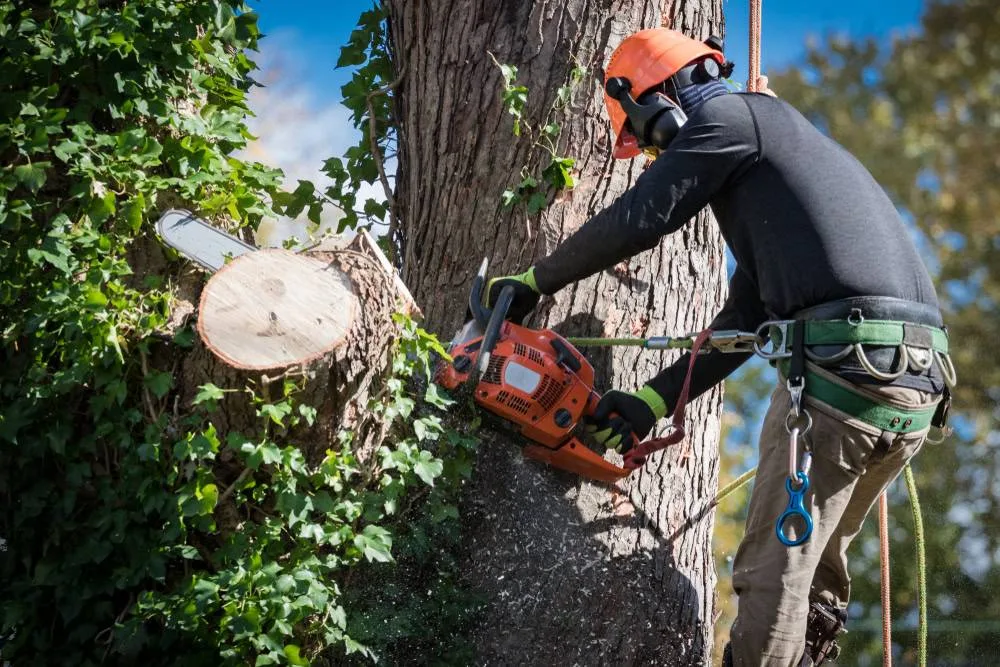Tree Services in Saint James, NY
Your Trees Are Safe With Us

Hear from Our Customers

Professional Tree Care Saint James
When your trees are properly maintained, you sleep better at night. No more worrying about that leaning oak during the next storm or wondering if those dead branches will come crashing down on your roof.
Your property looks better, your family stays safer, and your investment grows in value. Regular tree care prevents the expensive emergencies that catch other homeowners off guard.
With over 20 years serving Saint James families, we know exactly which trees handle Long Island weather and which ones need attention before they become problems.
Saint James Tree Service Experts
We’ve been taking care of trees in Saint James for over two decades. Our certified arborists live and work in this community, so we understand the unique challenges Long Island weather brings to your landscape.
From the mature oaks that make Saint James neighborhoods so beautiful to the storm cleanup that follows nor’easters, we’ve handled it all. Our team knows which tree species thrive here and which ones need extra attention to stay healthy.
You’re not just hiring a tree service – you’re working with neighbors who care about keeping Saint James safe and beautiful for everyone.

Tree Service Process Saint James
First, our certified arborist visits your property to assess your trees and identify any safety concerns or maintenance needs. We explain exactly what work is necessary and why, so you understand what you’re paying for.
Next, we provide a written estimate with clear pricing before any work begins. No surprise fees or hidden costs after the job is done.
During the work, we protect your property with tarps and barriers. We use proper cutting techniques that promote tree health and prevent damage to your landscape or structures. After we finish, we clean up completely – all debris gets removed from your property, and we leave your yard looking better than when we arrived.

Ready to get started?
Complete Tree Services Saint James
We provide comprehensive tree services from routine pruning to emergency removal. Our team handles tree trimming Saint James residents trust, crown reduction, stump grinding services, and complete tree removal when necessary.
We provide 24/7 emergency response for storm damage situations. When trees threaten your home or block your driveway after a Long Island storm, we respond quickly to make your property safe again.
Our maintenance programs keep your trees healthy year-round. Regular pruning prevents problems before they become expensive emergencies, and proper care extends the life of your valuable landscape investment. Saint James homeowners know that proactive tree care saves money and stress in the long run.

How do I know if a tree needs to be removed?
Several signs indicate a tree might need removal: dead or dying branches throughout the canopy, fungal growth at the base, significant lean toward structures, or root damage from construction. Large cracks in the trunk or hollow sections also signal potential danger.
However, many trees that look problematic can actually be saved with proper pruning or treatment. Our certified arborists assess each tree individually and recommend removal only when necessary for safety or when the tree cannot be saved.
Don’t try to make this decision yourself – tree assessment requires training to spot subtle signs of disease or structural weakness that could make a tree dangerous.
What does tree removal cost in Saint James?
Tree removal costs vary based on the tree’s size, location, and complexity of the job. Small trees under 30 feet typically cost less than larger specimens over 60 feet.
Trees near power lines, close to structures, or in tight spaces require more careful work and specialized equipment, which affects pricing. Most residential tree removals in the Saint James area range from several hundred to a few thousand dollars depending on these factors.
We provide free written estimates that break down all costs upfront, including removal, cleanup, and any necessary permits. You’ll know exactly what you’re paying before we start any work.
When is the best time to prune trees?
For most deciduous trees common in Long Island, late winter or early spring before new growth begins is ideal. This timing allows you to see the tree’s structure clearly and promotes healthy spring growth.
However, dead or hazardous branches should be removed immediately regardless of season. Some trees, like maples and birches, are best pruned in late summer to avoid excessive sap bleeding.
The key is understanding that different tree species have different needs. Our certified arborists know the optimal timing for each type of tree in your Saint James landscape, so you get the best results without stressing your trees.
Do you provide emergency tree services during storms?
Yes, we provide 24/7 emergency tree removal services throughout Saint James and Suffolk County. When storms hit Long Island, fallen trees and damaged branches can threaten your home, block your driveway, or create dangerous conditions.
We respond quickly to make your property safe again. Our team has the equipment and experience to handle emergency situations safely, even when trees are tangled in power lines or leaning against structures.
Don’t wait if you have storm damage – the longer a damaged tree sits, the more dangerous it becomes. Call us immediately and we’ll assess the situation and make your property safe as quickly as possible.
Are you licensed and insured for tree work?
Yes, Green Light Tree Services is fully licensed and carries comprehensive liability insurance and workers’ compensation coverage. Our insurance protects your property in the unlikely event of accidental damage during tree work.
We can provide proof of insurance before beginning any job. Our team includes certified arborists who have completed specialized training in tree care and safety procedures.
This licensing and insurance coverage is essential for any tree service company, as tree work involves significant risks to both workers and property. Never hire an uninsured tree service – you could be liable for injuries or property damage.
What happens to the wood after tree removal?
We can either remove the wood from your property or chip it into mulch for your landscaping – just let us know your preference. Many Saint James homeowners like to keep some of the wood for firewood if it’s a good burning species.
For larger removals, we typically remove most of the wood and debris as part of our complete cleanup service. We can also arrange to have logs cut to specific lengths if you want to use them for other projects.
Every job includes complete debris removal, so you don’t have to worry about dealing with branches, leaves, or wood chips scattered around your property. We leave your yard clean and ready to enjoy.